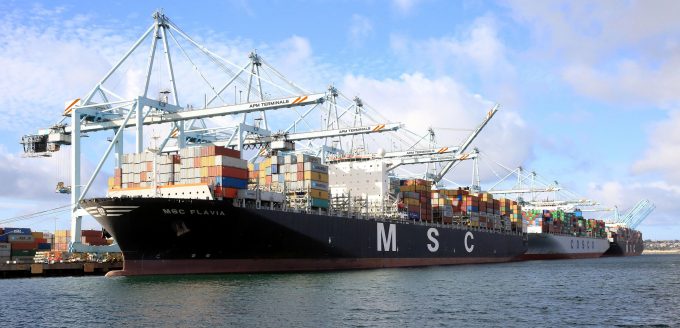CMA CGM eyes HPH sale after Ceva shines in a 'stable' second quarter
CMA CGM has expressed interest in the Hutchison Port Holdings (HPH) sale in a bid ...

Extra loaders deployed by transpacific carriers to meet booming import demand have overwhelmed the US gateways of Los Angeles and Long Beach.
According to a survey by Alphaliner, the capacity of the 27 ships berthed and 41 at anchorage at the San Pedro Bay ports stood at a massive 579,100 teu on Monday.
The ...

Comment on this article